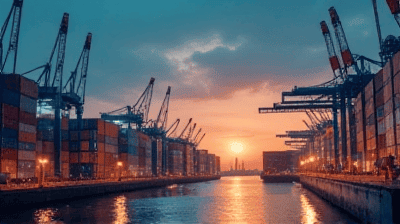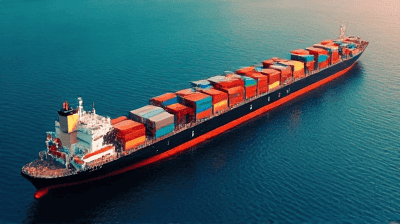
In recent years, supply chain issues have emerged as a significant concern for global economies. These disruptions, initially exacerbated by the COVID-19 pandemic, have revealed the vulnerabilities in supply chains worldwide. As economies strive to recover and adapt, understanding the implications of these supply chain challenges is crucial for businesses, consumers, and policymakers alike.
Understanding Supply Chains
What is a Supply Chain?
A supply chain is a network of entities involved in the production, distribution, and delivery of goods and services. This network includes suppliers, manufacturers, distributors, retailers, and logistics providers. In an interconnected global economy, supply chains often span multiple countries, relying on complex systems to ensure that products reach consumers efficiently and cost-effectively.
Importance of Supply Chains
Supply chains play a vital role in economic stability and growth. They facilitate trade, drive innovation, and enable businesses to meet consumer demand. A robust supply chain can enhance productivity, reduce costs, and improve customer satisfaction, while disruptions can have cascading effects on economies.
The Recent Supply Chain Crisis

COVID-19 Pandemic Aftermath
The COVID-19 pandemic has had a profound impact on supply chains worldwide. Lockdowns and restrictions disrupted manufacturing operations, leading to shortages of essential goods and raw materials. As countries reopened, demand surged, further straining supply chains already weakened by previous disruptions.
Key aspects of the pandemic's impact on supply chains include:
Factory Closures: Many factories faced temporary closures or reduced capacity due to health and safety regulations, leading to decreased output and supply shortages.
Labor Shortages: Labor shortages emerged as workers faced illness, quarantine measures, and changes in employment conditions. These shortages hindered production and logistics operations.
Transportation Bottlenecks: Disruptions in shipping routes and transportation networks caused delays in the delivery of goods. Congestion at ports and a shortage of shipping containers became common issues.
Geopolitical Tensions
Geopolitical factors, including trade disputes and conflicts, further exacerbated supply chain issues. Countries have imposed tariffs, sanctions, and export restrictions, creating uncertainty and volatility in global trade. This environment complicates sourcing strategies and increases costs for businesses reliant on international supply chains.
Natural Disasters and Unforeseen Events
In addition to the pandemic and geopolitical tensions, natural disasters, and unforeseen events have disrupted supply chains. Hurricanes, floods, and wildfires have damaged infrastructure and production facilities, further complicating logistics. Events like the blockage of the Suez Canal in 2021 have demonstrated how a single disruption in a crucial shipping route can have global repercussions.
Economic Implications of Supply Chain Issues
1. Inflationary Pressures
One of the most immediate economic impacts of supply chain disruptions is rising inflation. As shortages arise, prices for goods increase. Companies facing higher production and shipping costs may pass these expenses onto consumers, leading to broader inflationary pressures across the economy.
2. Slowed Economic Growth
Supply chain issues can significantly hinder economic growth. Delays in the delivery of goods can lead to production slowdowns, as businesses cannot obtain the necessary inputs to manufacture their products. This slowdown translates into decreased output, lower sales, and reduced consumer spending.
3. Strain on Small Businesses
Small businesses are particularly vulnerable to supply chain disruptions. Unlike larger corporations, small businesses often lack the resources and negotiating power to navigate shortages effectively. As such, they may face inventory shortages, which can lead to lost sales and diminished customer loyalty.
4. Job Losses and Labor Market Volatility
The ripple effects of supply chain disruptions can lead to job losses and labor market volatility. Manufacturing and logistics sectors may face layoffs as companies adjust to reduced demand. Additionally, labor shortages may make it challenging for companies to hire workers, creating imbalances in the labor market.
5. Increased Consumer Uncertainty
Consumer behavior is significantly impacted by supply chain issues. As consumers encounter shortages and rising prices, uncertainty increases, which can lead to changes in spending habits. For example, consumers may buy in bulk or seek alternatives, impacting demand patterns across various industries.
Sector-Specific Impacts

1. Retail Industry
The retail industry has faced substantial challenges due to supply chain disruptions. Many retailers have experienced stockouts, limiting their ability to meet consumer demand. Seasonal products, such as holiday gifts, may be particularly affected, leading to missed sales opportunities.
2. Automotive Sector
The automotive industry has been particularly hard hit by supply chain issues, especially semiconductor shortages. Modern vehicles rely heavily on electronic components, and the inability to source these chips has led to production halts and slowdowns. Automakers have had to adjust production schedules and, in some cases, reduce vehicle features to adapt to the limitations.
3. Technology Sector
Technology companies have also grappled with supply chain disruptions. The demand for consumer electronics surged during the pandemic, but shortages of critical components affected production. Companies have reported delays in launch schedules and limited availability of popular devices, impacting sales.
4. Construction Industry
The construction industry is facing rising costs due to supply chain disruptions. Shortages of materials such as lumber, steel, and cement have led to increased prices, which may result in project delays and budget overruns. This situation has implications for housing markets and infrastructure development.
5. Agriculture and Food Supply Chains
Agriculture and food supply chains have experienced their own set of challenges. Labor shortages due to the pandemic have hindered harvesting and processing, while transportation disruptions have impacted the distribution of food products. These challenges contribute to rising food prices and food insecurity in various regions.
Long-Term Consequences of Supply Chain Disruptions
1. Shift Towards Resilience
As companies and governments recognize the vulnerabilities exposed by recent disruptions, there is an increasing focus on building resilient supply chains. Businesses are exploring strategies to diversify suppliers, localize production, and invest in technology to enhance supply chain visibility.
2. Technological Innovation
The rise of digital technologies is expected to play a crucial role in transforming supply chain management. Advanced data analytics, blockchain technology, and automation can enhance efficiency and improve responsiveness to disruptions. Companies that adopt these technologies will be better positioned to navigate future challenges.
3. Policy Changes
Governments are likely to implement policy changes aimed at strengthening supply chains. This may include investments in infrastructure, support for domestic manufacturing, and incentives for companies to adopt sustainable practices. These measures aim to mitigate risks and promote stability in global supply chains.
4. Sustainable Practices
Sustainability is becoming a crucial consideration in supply chain management. As environmental concerns grow, companies are increasingly adopting sustainable practices to reduce their carbon footprint. This shift may influence sourcing strategies and emphasize responsible sourcing of materials.
Strategies for Businesses Facing Supply Chain Challenges

1. Diversification of Suppliers
Businesses should consider diversifying their supplier base to mitigate risks associated with relying on a single source. By building relationships with multiple suppliers in different regions, companies can reduce dependence and enhance their ability to respond to disruptions.
2. Enhancing Inventory Management
Effective inventory management is critical in times of uncertainty. Companies should adopt just-in-time inventory practices while maintaining safety stock levels for essential materials. This balance allows businesses to respond promptly to changes in demand without overstocking.
3. Investing in Technology
Investing in technology to improve supply chain visibility can provide companies with real-time insights into operations. Advanced analytics can help identify potential disruptions before they escalate, while supply chain management software can streamline processes and enhance efficiency.
4. Building Strong Relationships
Developing strong relationships with suppliers and partners is essential for effective supply chain management. Open communication and collaboration can lead to better responsiveness to changes and challenges, fostering mutual support and understanding.
5. Scenario Planning
Scenario planning enables companies to prepare for potential disruptions by identifying risks and developing contingency plans. By anticipating various scenarios, businesses can respond more effectively to unexpected events and minimize their impact.
Conclusion
Supply chain issues are profoundly impacting global economies, exposing vulnerabilities that affect businesses and consumers alike. The implications of these disruptions are far-reaching, influencing inflation rates, economic growth, and consumer behavior.
As economies work to recover from these challenges, it is essential for businesses to adopt strategies that enhance resilience and promote sustainability. By diversifying suppliers, investing in technology, and building strong relationships, companies can navigate current difficulties and prepare for future challenges.
In a globalized economy, the interdependence of supply chains underscores the importance of proactive management. The lessons learned from recent disruptions can inform future practices, ensuring that businesses are better equipped to respond to new challenges as they arise.
As we move forward, the continued focus on supply chain resilience will be vital for economic stability, sustainability, and the overall health of global markets.
